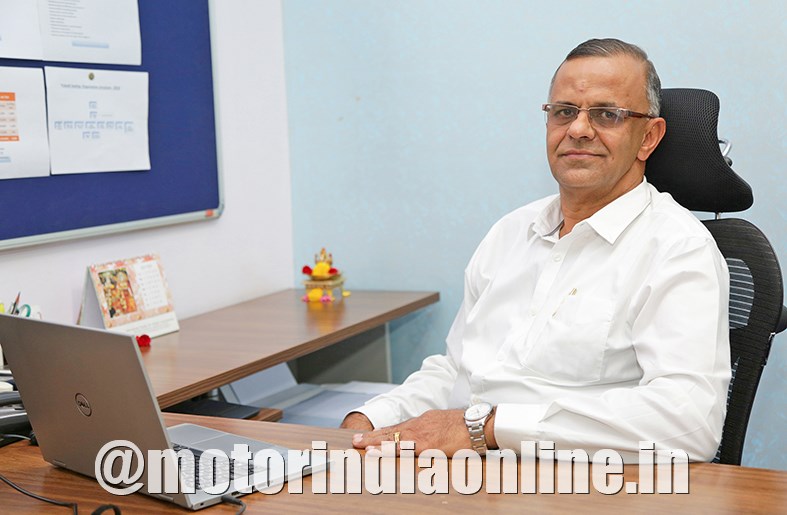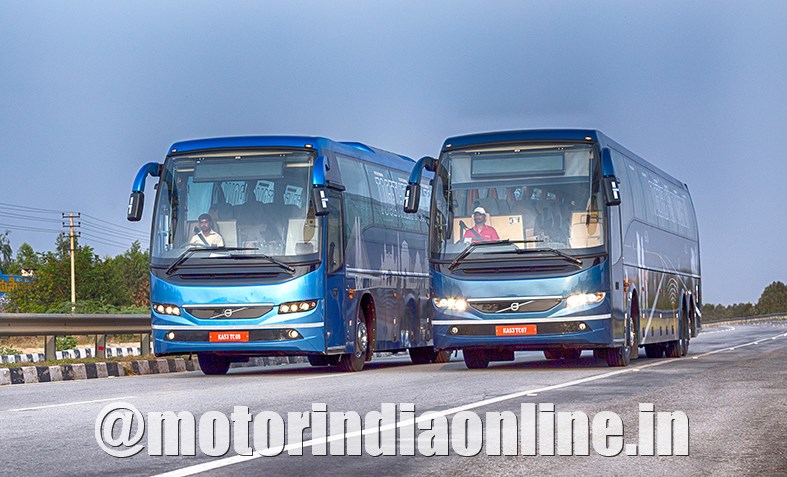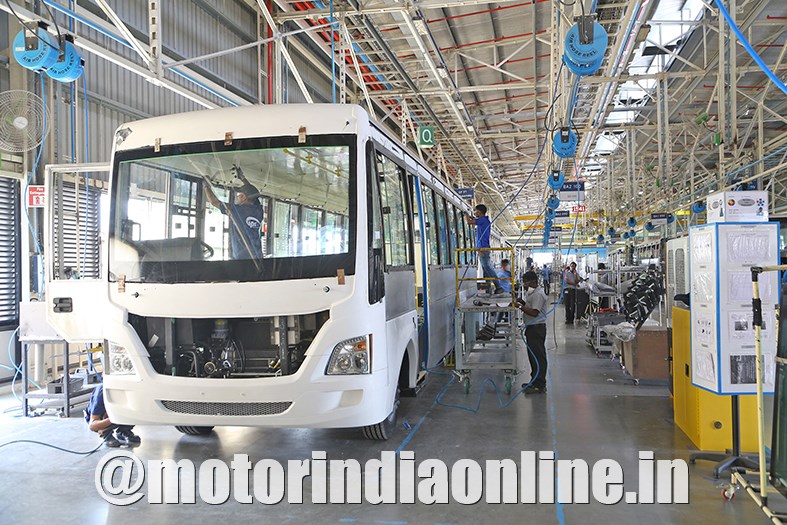This article by Rengarajan Srinivasan, Director, Stellar SP (P) Limited, intends to bring to light the specific issues and constraints of the bus industry and its stakeholders, namely, the bus operators, bus body fabricators and the suppliers together employing a large workforce and their dependant families facing the plight of survival
Worldwide, the corona virus-triggered pandemic has caused unforeseen economic issues regarding trade and industry. At present estimates, the pandemic has caused impact on 190+ countries with over 53 million people suffering and over 10 million losing precious lives. Still, there is no protection for the risk exposure and a vaccine is yet to reach final approval to make its way to the market for prevention measures. Governments and social agencies are over-stretched with expenditures and resources deployed to handle the pandemic and prevent it from community spread across the hot spot demography.

India is among the top nations with the most affected population and draining the nation’s resources and finances in combating the pandemic, while precious lives are lost to the virus. The year 2020 could be a watershed for the economy. Economic revival is yet another mounting challenge to the governments who are being forced to create relief packages. Still, there are huge gaps in the requisite financial aid and subsidies to support the industries, more specifically MSMEs and business enterprises in the automotive industry. The bus industry is the most affected segment among the automotive industry and we still see the absence of buses on roads. Hence, the focus is now on highlighting the need for revival.
Automobile Industry
For the automotive industry, the year 2020 has posed multiple challenges coming in the wake of a downtrend in economy during 2019, falling demand, uncertainties on electric vehicle (EV) transition and likely investments, court-led enforcement of the BS VI implementation timelines and the hike in manufacturing cost of vehicles. The Indian commercial vehicle industry has been numerous challenges in its transition to BS VI technology. The switch to BS VI is a big leap mandated for emission control and a cleaner environment, as is the CAFE 2 standard.
With uncertainty over the demand and affordability of BS VI, the industry is already perplexed with the impact triggered by pandemic lockouts and suspension of manufacturing activities since April 2020. Meanwhile, the higher acquisition costs for BS VI vehicles pose barriers for the operators in investment and ownership costs. To improve affordability, growth in sales volumes will offset the cost impact and ease implementation.
Bus Industry
The bus industry has set up huge facilities with investments in capacity for large-scale production of buses over the years. Bus body builders and their supply chain industries are employing several thousand direct staff, workmen, local and migrant labourers and hence contribute significantly to the GDP with taxes and statutory levies. The industry has over the years groomed specialised skills in their operational excellence, trained their personnel and workmen and developed significant infrastructure for bus body manufacturing over the last few decades. This industry takes pride in being at the forefront of ‘Make in India’ initiatives and provides employment and investment opportunities.

The unexpected fallout of the pandemic with continued lockdown has crippled the economy. The resulting impact has sealed the prospects of the bus industry without operational revenues, non-performing assets and large inventories, order cancellations, fixed costs and interest burdens. The bus industry remains the worst hit among the automotive industry segments to bear the brunt of these impacts with continued losses and unlikely revival visibility even by this month, which is nearing the end of 2020! In the current year, since mid-2020, there has been continued poor sentiment on new chassis purchase and deferred bus induction due to wider losses incurred by the bus operators and lack of government support to this sector.
Bus Body Fabrication Firms
We have major bus body building hubs across India. From Jallandhar and Delhi in North India to Bangalore and Karur in South India, the bus industry employs a large workforce due to its labour-centric nature of fabrication and customisation. Vehicle OEMs have also put up large investments in bus body building bases. Tata Motors, AL, VECV, SML Isuzu, DICV and JBM have their own production centres while Mahindra & Mahindra has a dedicated outsourcing unit. Karnataka is a major hub for bus body building in India. Bengaluru, Dharwad, Belgaum are major bus body building centres with large-scale OEM and private industries for bus body production, production capacities, significant investments, large skilled workforce and sub-contracting services.
Bengaluru has developed a brand identity for production of coaches and buses with best-in-class firms as leaders in the market that cater to the state transport organisations, institutions, private bus operators and government fleets. Bus World International Expo has chosen Bengaluru as the India hub for its biannual event which attracts large attendance from the global industry representatives and domestic firms and operators. Similarly, Tamil Nadu has major hubs for bus body building in India. Karur leads the industry with some major bus body building private industries for bus body production, significant investments, production capacities, large-skilled workforce and sub-contracting services.

Chennai and Tiruchirappalli add up to the production of buses with added capacities and resources deployed. Karur has developed a brand identity for production of mofussil, city and institutional buses that cater to the state transport organisations, institutions, private bus operators and other state customers. This town has employed over a hundred thousand people in the manufacturing, supply chain for raw materials, components and sub systems, logistics, material handling and transport firms, small-scale entrepreneurs and MSME enterprises associated with the bus body building industry.
Bus body builders need urgent support from the governments for subsidies in taxes, interest and working capital for bus production. Bus body builders require new orders from the local government-aided state transport organisations and other government departments, new orders from the bus operators to start work, recall workforce and provide business for the supply chain.
The supply chain to the bus body building industry covers considerable chunk of automotive component MSME firms, covering seats, bus interior components, automotive engineering grade glass, bus air-conditioners and steel fabrication subcontracting firms, which are based across few states like Karnataka, Tamil Nadu, Delhi and Punjab and employs significant workforce, generating revenue for the government through taxes and contribution to the state’s employment base.
The livelihood of a large cross-section of workforce has been seriously affected without their daily earnings and thousands of families are in a state of poverty and hunger, needing resumption of daily wage work opportunities. Bus body builders across India are seeking urgent intervention from the governments for infusing funds and subsidies to the state transport corporations for purchase of new buses, replacement of old fleet and refurbishing the buses that have not been operational for long time.
Bus Operators and Operational Issues
We have considerable the spread of ‘bus operational hubs’ across the country with state capitals, urban centres and towns linked to road transportation with significant number of operators and high density of buses ferrying millions of population in public transportation by buses that are considered a lifeline to the country’s economies. Major bus operational hubs employ several thousands of workers, support services and agencies to cater to the public transportation needs of the country. These major bus operational hubs with large fleet of bus operators, buses and subsidiary services employ a huge number of daily wage workforces for their operations, and are fully dependant on daily revenues for sustenance of operating viability.
They play an important role in tourism, daily work commutation, businesses and economic activities, generating revenues for the government through fuel, taxes and permits. The pandemic’s impact since March 2020 and the resulting lockdowns have crippled the bus industry’s operations, grounded bus fleets without revenues and caused huge unemployment across bus body builders, allied suppliers, subcontracting firms, service agencies and migrant workers. Bus operators and state transport undertakings have been suffering the worst phase of their business enterprises on account of revenue losses for the last seven months without minimum required operational utilisation of fleets.
They now face near liquidation due to costs on investment, bank loan interests, liability of salaries and wages, statutory remittances and loan repayment enforcements. The estimated job loss or absence of wage earnings seem to impact over a hundred thousand of unemployed workforces in these states and employment generation is practically nil for this year in these sectors since April 2020. Over 95% of migrant workers employed prior to the pandemic do not have any work demand to resume their livelihood. New bus induction has been put on hold by all major operators in the absence of revenue visibility ahead.
These developments are of critical nature needing support from the government to put up revival mechanisms with injection of funds to the industry, in line with other MSME initiatives rolled out by the governments. Private bus operators need government support by waiver of road taxes to mitigate their losses and liabilities on interest costs and financial aid by term loans and GST subsidy to invest in new buses for resuming their operations.
Need for Revival and Mitigation Plans
The bus industry seeks to grow their businesses in the country and expects the government to provide a thrust to the initiatives for economic revival post the pandemic impact. The bus industry is still missing on the radar of the governments. There is potential benefit to revive the bus industry and bring the economy back on track. Public state transport corporations that are holding old BS II and BS III buses need subsidy and funding support from the governments for new vehicle procurements. The government should expedite the vehicle scrappage policy to help replacement of the aging fleet of BS I to BS III commercial vehicles and take the lead in switching to BS VI, focusing on the vehicles held by government departments, public sector undertakings, airports, and seaports and infuse the required funding with budgetary support.
These economic revival initiatives will accelerate the production of BS VI technology vehicles and roll out BS VI-compliant bus chassis to give the Indian industry much-needed sales volumes at this juncture. This will enable new work orders for the bus body builders and supply chains. New orders will bring in the required job opportunities for the hitherto unemployed migrant workforce and local employment in the bus body construction segment. On a practical level, for metros and urban or city buses, there is an urgent need for new buses required for public transportation purposes across India. The government should focus efforts in this direction to select metropolitan cities as pilot projects for implementation. These measures will propel the automobile industry with demands for commercial buses over the next few years, thus creating an enabling atmosphere of investments and infrastructure developments. This will create significant potential for commercial vehicles with newer technology. With this objective, state governments need to inject funds for procurement of new buses and refurbishing the old buses on a larger scale to improve operational efficiency of the public transportation system for the common people, who cannot afford personal mobility of passenger cars. The bus industry is a lifeline for the economy and its revival is dependent on much-needed policy initiatives from the governments.